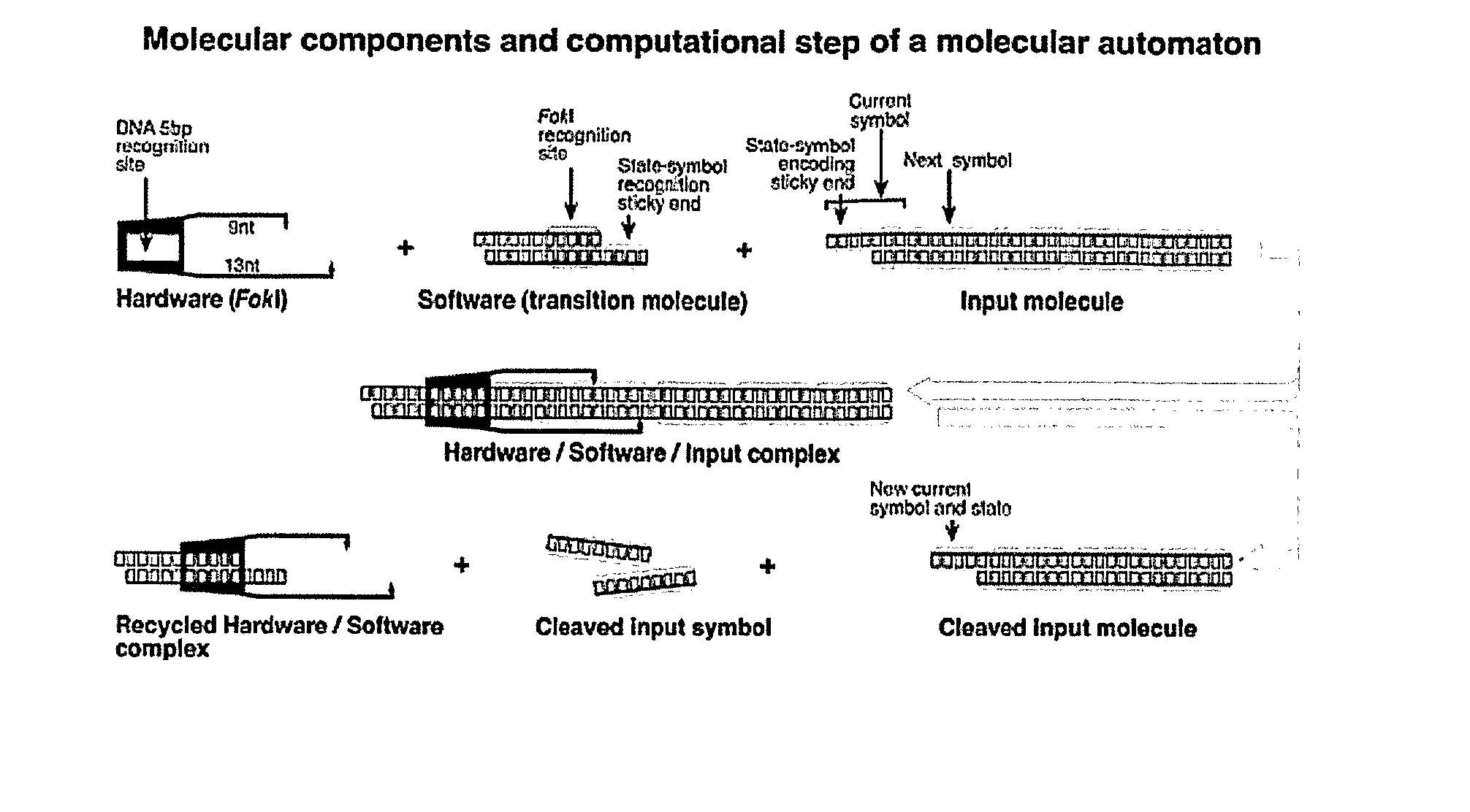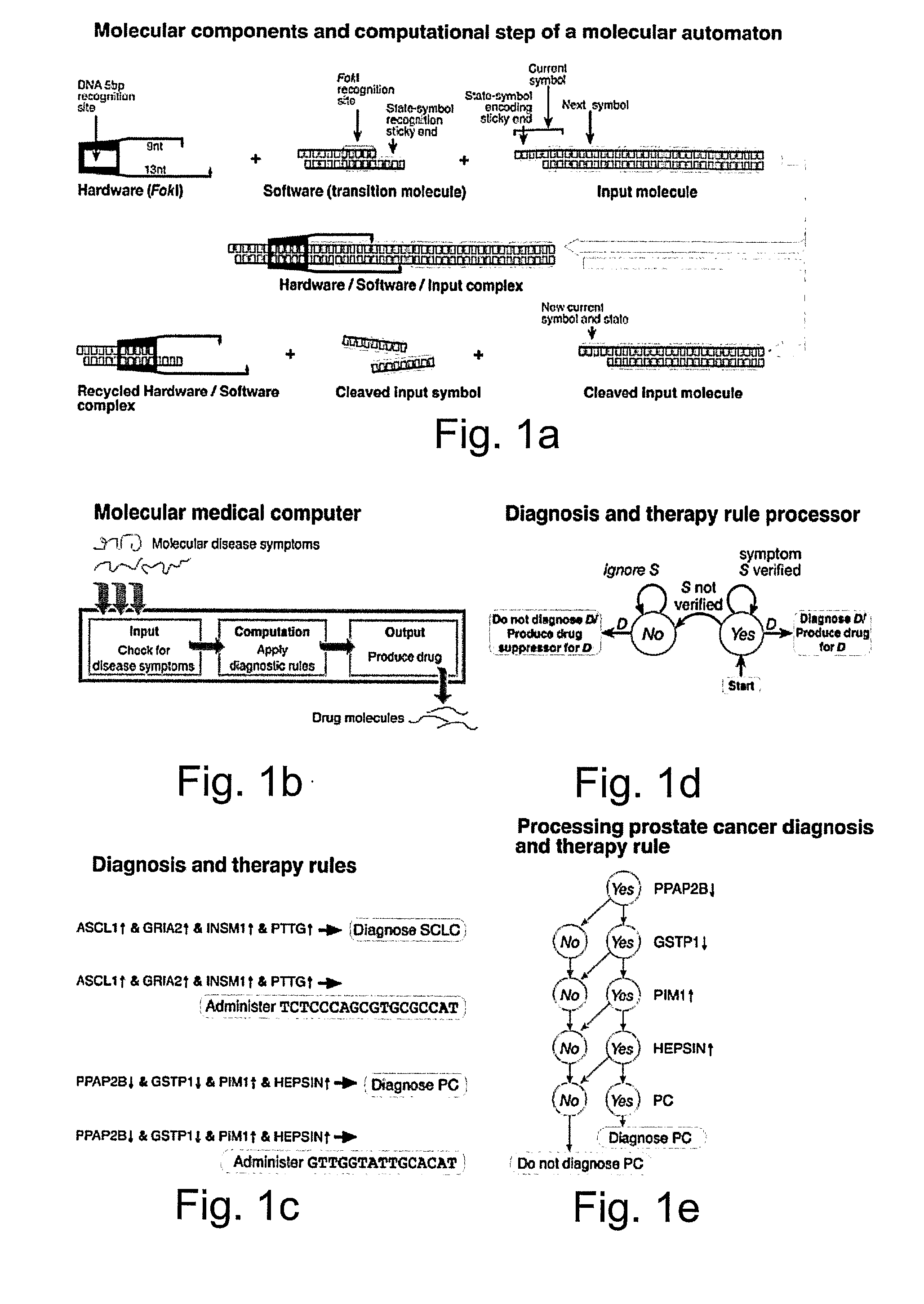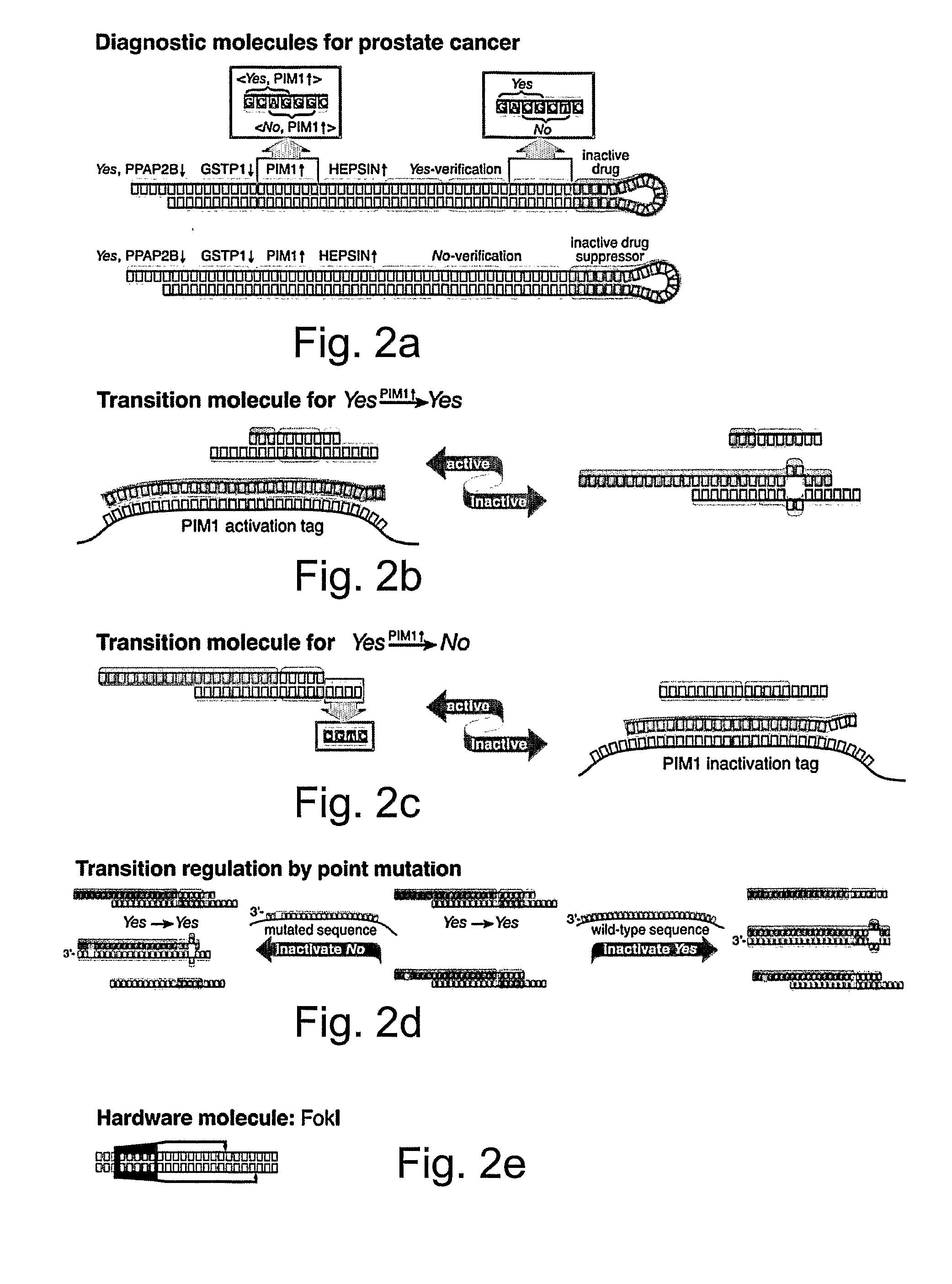Autonomous Molecular Computer Diagnoses Molecular Disease Markers and Administers Requisite Drug in Vitro
a technology of molecular disease and autonomous molecular computers, applied in the field of biomolecular computers, can solve the problems of background art not teaching or suggesting background art also does not teach or suggest an autonomous molecular computer,
- Summary
- Abstract
- Description
- Claims
- Application Information
AI Technical Summary
Benefits of technology
Problems solved by technology
Method used
Image
Examples
example 1
Design of Molecular and Automata Components of the Molecular Computer
[0141] Molecular Design and Operation
[0142] The molecular computer of the present invention optionally and preferably features three types of molecules: (i) diagnostic molecules (FIG. 2a) that encode diagnosis and therapy rules, (ii) transition molecules that realize transition rules and are regulated by molecular disease markers (FIGS. 2b, 2c and 2d) and (iii) hardware molecules, the restriction enzyme FokI that drives the computation forward (FIG. 2e).
[0143] A diagnostic molecule (FIG. 2a) has a diagnosis moiety and a drug-administration moiety. The drug-release moiety releases a drug molecule upon positive diagnosis and the drug-suppressor-release moiety releases a drug suppressor molecule upon negative diagnosis. This design allows fine control over the amount of drug administered as a function of the confidence in the diagnosis, simply by varying the initial relative concentrations of the drug and drug-supp...
example 2
Disease Marker Detection and Diagnosis
[0167] The molecular computer of the present invention, as shown in FIGS. 2a-e, can check for the disease symptoms specified in these rules (FIGS. 3 and 4); apply these rules to reach a diagnostic and / or a therapeutic decision (FIGS. 3 and 5); and administer the drug molecules as specified by a therapy rule (FIG. 3). This Example describes disease marker detection and diagnosis, with exemplary treatment, by using a non-limiting, illustrative experimental design and analysis.
[0168] Construction of the Automata Components
[0169] All deoxyribonucleotides employed for automata construction were ordered from Sigma-Genosys or from the Weizmann Institute DNA synthesis unit, PAGE-purified to homogeneity and quantified by GeneQUANT instrument (Pharmacia). Non-labeled double-stranded components were prepared by annealing 1000 μmol of each single strand in 10 micro-liters of 50 mM NaCl, by heating to 94° C. and slow cooling down in a PCR machine block. D...
example 3
Detection of a Molecular Marker at Different Concentrations
[0211] The input module described hereinabove was designed to detect over- and under-expressed mRNA species as indicators of a specific disease. Usually, 3 μM was set to be the normal state for under-expressed gene and the disease state for over-expressed gene; whereas, 0 μM was set to be the disease state for under-expressed gene and the normal state for over-expressed gene. Other indicator concentration ranges were demonstrated, but the range's low value was set up to be 0 μM at all times. The motivation for setting the lower sensitivity value to zero is the fact that the transitions displacement regulation process begins as soon as the first indicator molecule becomes available. Theoretically, one indicator molecule causes one active negative transition to become inactive, and one inactive positive transition to become active by the strands displacement process (in the case of over expressed gene, and vice versa in the c...
PUM
 Login to View More
Login to View More Abstract
Description
Claims
Application Information
 Login to View More
Login to View More - R&D
- Intellectual Property
- Life Sciences
- Materials
- Tech Scout
- Unparalleled Data Quality
- Higher Quality Content
- 60% Fewer Hallucinations
Browse by: Latest US Patents, China's latest patents, Technical Efficacy Thesaurus, Application Domain, Technology Topic, Popular Technical Reports.
© 2025 PatSnap. All rights reserved.Legal|Privacy policy|Modern Slavery Act Transparency Statement|Sitemap|About US| Contact US: help@patsnap.com



